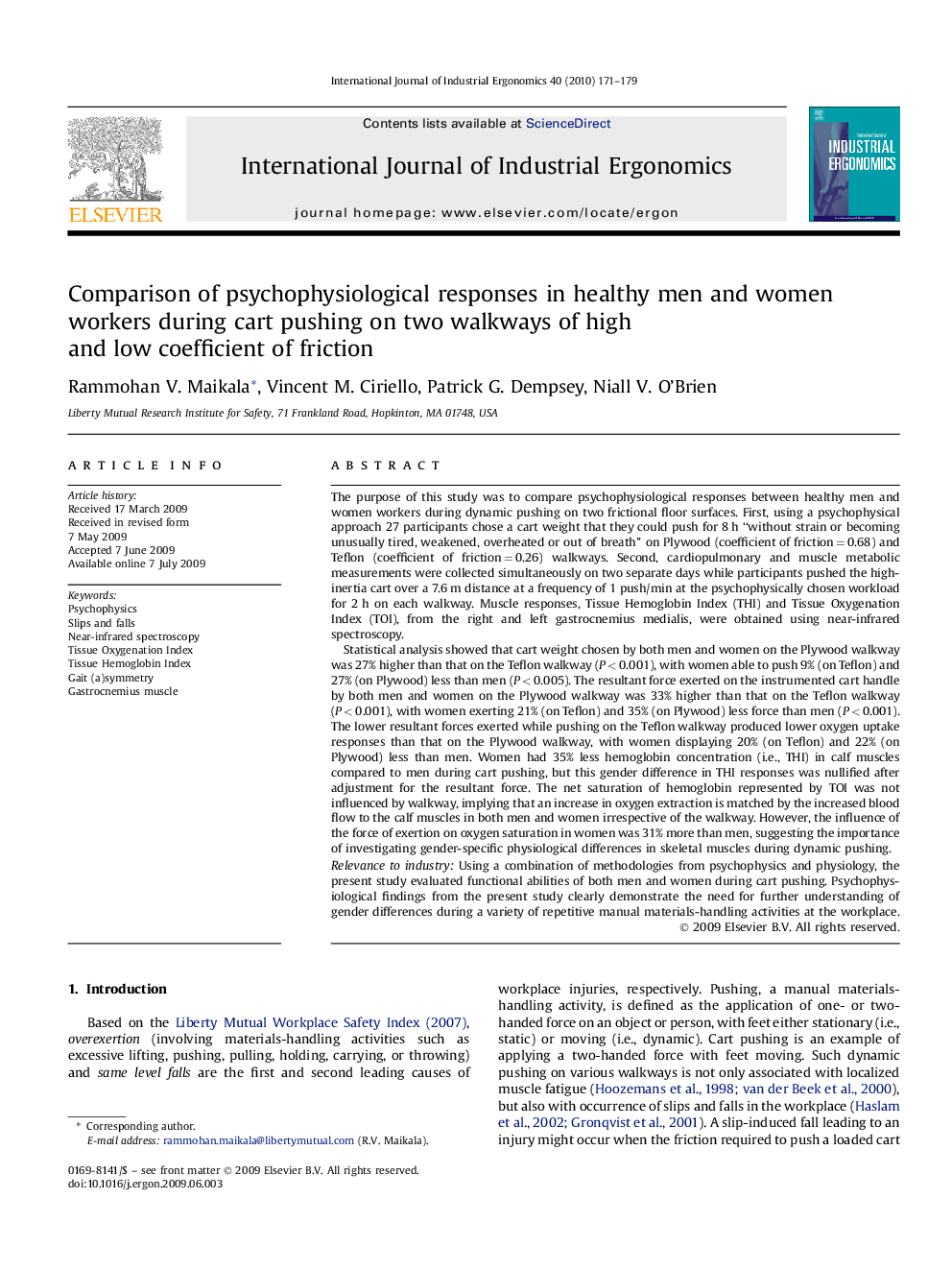| کد مقاله | کد نشریه | سال انتشار | مقاله انگلیسی | نسخه تمام متن |
|---|---|---|---|---|
| 1096467 | 1487459 | 2010 | 9 صفحه PDF | دانلود رایگان |

The purpose of this study was to compare psychophysiological responses between healthy men and women workers during dynamic pushing on two frictional floor surfaces. First, using a psychophysical approach 27 participants chose a cart weight that they could push for 8 h “without strain or becoming unusually tired, weakened, overheated or out of breath” on Plywood (coefficient of friction = 0.68) and Teflon (coefficient of friction = 0.26) walkways. Second, cardiopulmonary and muscle metabolic measurements were collected simultaneously on two separate days while participants pushed the high-inertia cart over a 7.6 m distance at a frequency of 1 push/min at the psychophysically chosen workload for 2 h on each walkway. Muscle responses, Tissue Hemoglobin Index (THI) and Tissue Oxygenation Index (TOI), from the right and left gastrocnemius medialis, were obtained using near-infrared spectroscopy.Statistical analysis showed that cart weight chosen by both men and women on the Plywood walkway was 27% higher than that on the Teflon walkway (P < 0.001), with women able to push 9% (on Teflon) and 27% (on Plywood) less than men (P < 0.005). The resultant force exerted on the instrumented cart handle by both men and women on the Plywood walkway was 33% higher than that on the Teflon walkway (P < 0.001), with women exerting 21% (on Teflon) and 35% (on Plywood) less force than men (P < 0.001). The lower resultant forces exerted while pushing on the Teflon walkway produced lower oxygen uptake responses than that on the Plywood walkway, with women displaying 20% (on Teflon) and 22% (on Plywood) less than men. Women had 35% less hemoglobin concentration (i.e., THI) in calf muscles compared to men during cart pushing, but this gender difference in THI responses was nullified after adjustment for the resultant force. The net saturation of hemoglobin represented by TOI was not influenced by walkway, implying that an increase in oxygen extraction is matched by the increased blood flow to the calf muscles in both men and women irrespective of the walkway. However, the influence of the force of exertion on oxygen saturation in women was 31% more than men, suggesting the importance of investigating gender-specific physiological differences in skeletal muscles during dynamic pushing.Relevance to industryUsing a combination of methodologies from psychophysics and physiology, the present study evaluated functional abilities of both men and women during cart pushing. Psychophysiological findings from the present study clearly demonstrate the need for further understanding of gender differences during a variety of repetitive manual materials-handling activities at the workplace.
Journal: International Journal of Industrial Ergonomics - Volume 40, Issue 2, March 2010, Pages 171–179